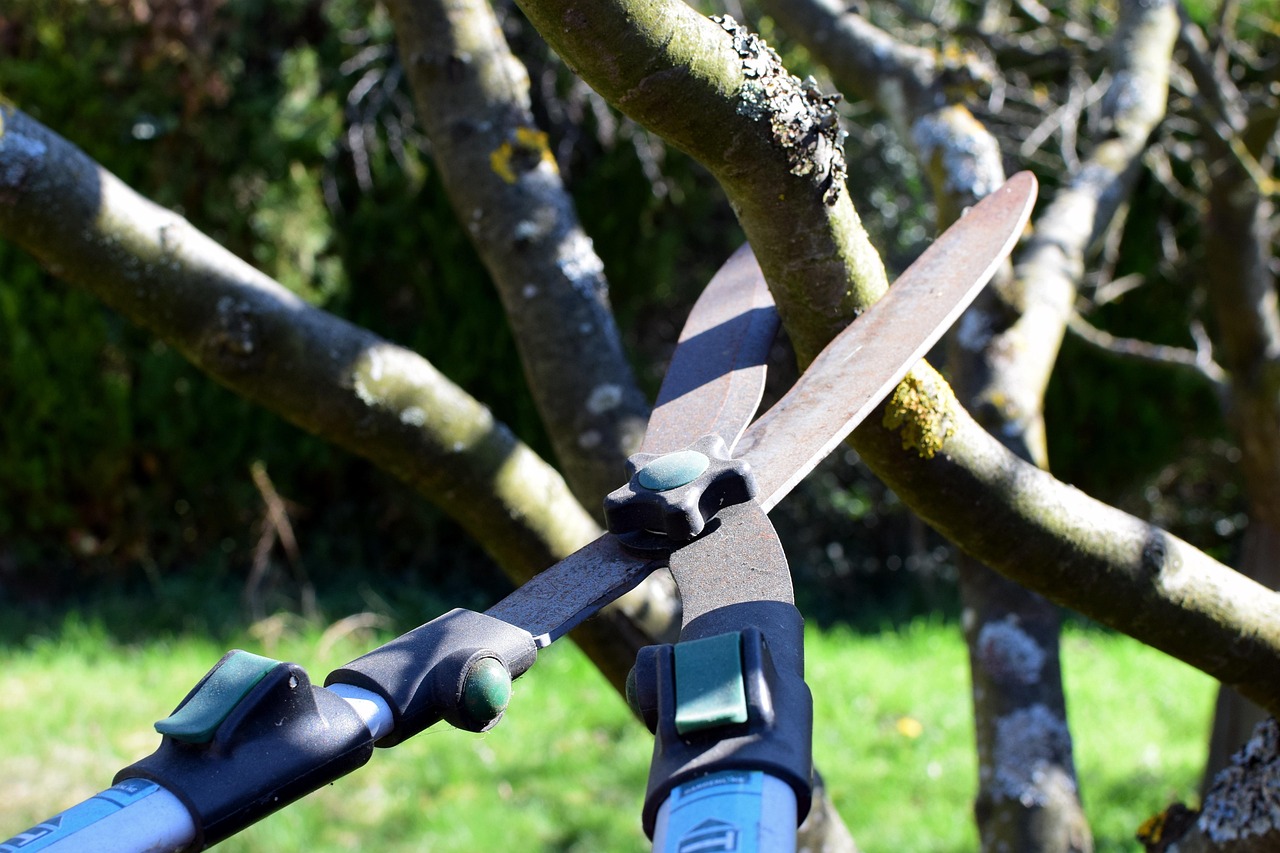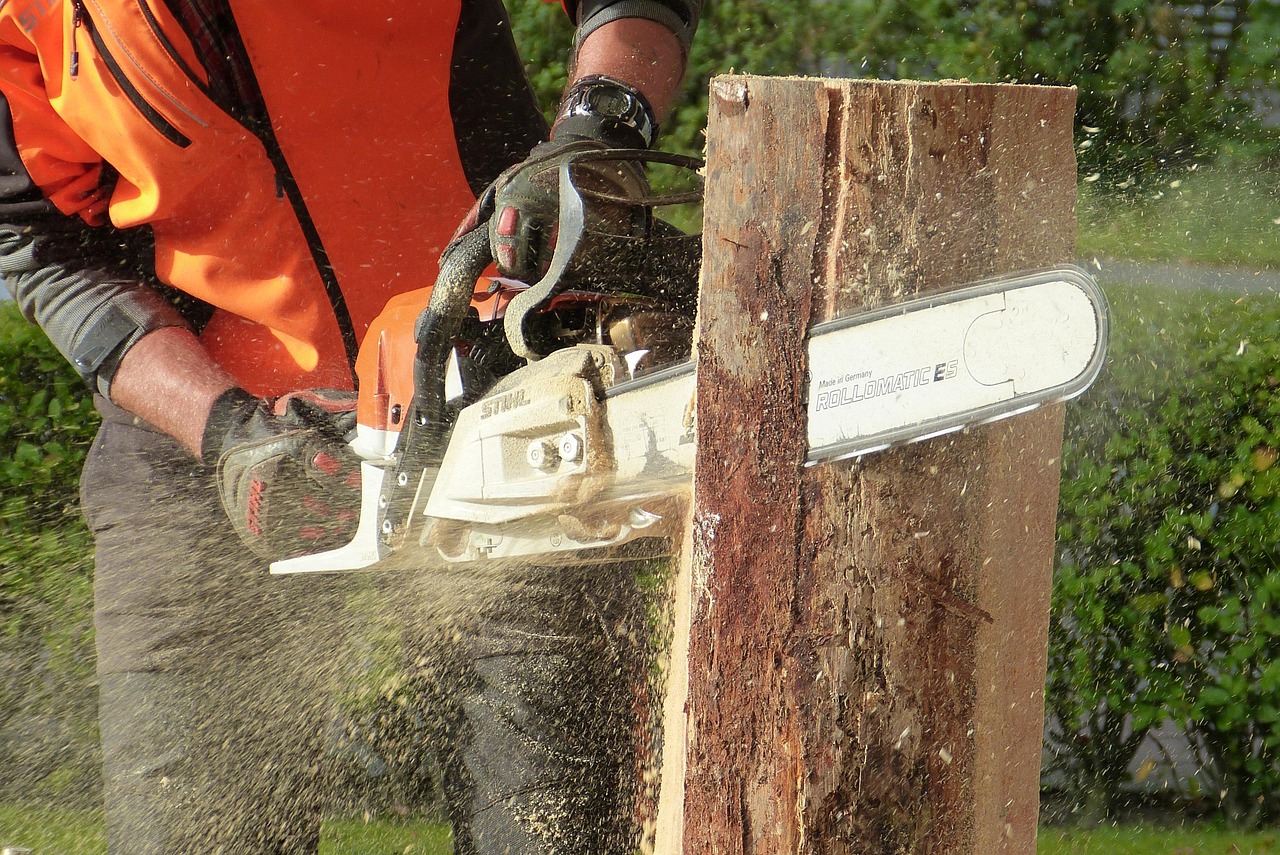A tree pruning app simplifies the process of tracking maintenance tasks for trees. It helps users schedule, record, and monitor pruning activities efficiently, ensuring that trees remain healthy and properly maintained throughout the year.
Understanding the Importance of Tree Pruning
Tree pruning is an essential practice for maintaining the health and aesthetics of trees. Regular pruning encourages growth, removes dead or diseased branches, and enhances the overall appearance of trees. Without proper maintenance, trees can become overgrown, leading to various issues such as pest infestations and structural weaknesses.

The process of pruning requires careful planning and execution. Homeowners, landscapers, and arborists must keep track of when and how much to prune each tree. This is where a tree pruning app comes into play, providing a convenient solution for effective maintenance tracking.
Key Benefits of a Tree Pruning App
Using a tree pruning app offers several advantages that streamline the maintenance process. Here are some key benefits:
- Easier Scheduling: Users can set reminders for upcoming pruning tasks and seasonal maintenance.
- Record Keeping: The app allows users to document past pruning activities, including dates and techniques used.
- Health Monitoring: Users can track the health of their trees by logging observations and any issues encountered.
- Visual Documentation: Many apps allow users to take photos of trees before and after pruning, providing a visual record of progress.
Features to Look For in a Tree Pruning App
When selecting a tree pruning app, it is important to consider the features that best meet your needs. Here are some common features to look for:

- User-Friendly Interface: A simple layout that is easy to navigate will enhance the user experience.
- Customizable Reminders: Look for options to set custom notifications for different tree species or maintenance tasks.
- Integrated Database: Access to a database of tree species with specific care guidelines can be very helpful.
- Weather Integration: Some apps offer weather updates, which can impact the timing of pruning activities.
The Science Behind Pruning
Understanding the science behind tree pruning can greatly enhance the effectiveness of maintenance practices. Pruning encourages healthy growth by removing excess foliage that competes for nutrients. It also allows more sunlight to reach the inner branches, promoting stronger development.
There are different types of pruning methods, including:
- Thinning: This method removes selected branches to improve light penetration and air circulation.
- Reduction: This technique reduces the size of a tree while preserving its natural shape.
- Maintenance Pruning: This involves removing dead or diseased branches to maintain health.
Best Practices for Effective Pruning
To achieve optimal results, it is vital to follow best practices when pruning trees. Below are some recommended guidelines:

- Choose the Right Time: Prune during the dormant season for most trees, typically in late winter or early spring.
- Use Proper Tools: Invest in high-quality pruning shears and saws to make clean cuts that promote healing.
- Avoid Over-Pruning: Removing too much foliage can stress the tree and lead to health problems.
- Seal Large Cuts: For significant cuts, consider using a sealant to protect against pests and disease.
The Role of Technology in Tree Care
The integration of technology into tree care has revolutionized how we approach maintenance. With advancements in mobile applications, users can now manage their tree care tasks with greater efficiency. A dedicated tree pruning app acts as a comprehensive tool that empowers users to take control of their landscape maintenance.
The use of technology not only simplifies tracking but also enhances overall tree care strategies. For instance, some apps include features that analyze local soil conditions, helping users make informed decisions about their pruning schedules.
The Future of Tree Pruning Apps
As technology continues to evolve, so will the capabilities of tree pruning apps. Future developments may include enhanced AI-driven recommendations based on user data. Additionally, integration with smart gardening devices could provide real-time feedback on tree health.

The growing emphasis on environmental sustainability may also lead to features focused on eco-friendly practices. Users will likely have access to resources that promote biodiversity and habitat conservation through responsible tree care.
| Feature | Description |
|---|---|
| User-Friendly Interface | An easy-to-navigate layout for all skill levels. |
| Custom Reminders | Set personalized alerts for different tasks. |
| Integrated Database | A reference guide for various tree species. |
| Weather Updates | A feature providing local weather forecasts. |
Choosing the Right Tree Pruning App
Selecting a tree pruning app that aligns with your specific needs can be daunting given the multitude of options available. It is crucial to consider factors such as user interface, features, and compatibility with your devices. This section will guide you through the decision-making process to help you find the best app for your tree maintenance needs.
Key Considerations for Selection
When searching for a tree pruning app, keep the following factors in mind:
- Compatibility: Ensure the app is compatible with your operating system, whether it’s iOS or Android.
- User Reviews: Check user ratings and reviews to gauge the app’s reliability and effectiveness.
- Cost: Consider whether the app is free, has a one-time purchase fee, or requires a subscription. Weigh the costs against the features offered.
- Customer Support: Look for apps that provide good customer service in case you encounter issues.
Popular Tree Pruning Apps in the Market
Several tree pruning apps have gained popularity among users due to their robust features and ease of use. Below is a list of some highly rated options:
| App Name | Key Features | Platform |
|---|---|---|
| Tree Care Pro | Pruning schedules, health monitoring, species database | iOS, Android |
| Gardenize | Photo documentation, plant care tips, community features | iOS, Android |
| PlantSnap | Plant identification, care reminders, pruning advice | iOS, Android |
| My Garden | Garden planner, seasonal tasks, weather updates | iOS, Android |
User Experiences and Feedback
User experiences can provide valuable insights into how effective an app is in real-world scenarios. Many users appreciate apps that allow them to track their progress and share tips with others in the gardening community. Here are some common themes from user feedback:
- Ease of Use: Many users highlight how intuitive some apps are, making it easy for beginners to navigate.
- Information Quality: Users often mention the quality of information provided regarding tree species and care practices.
- Customization: The ability to customize reminders and logging options is frequently praised.
Integrating Tree Pruning Apps into Your Routine
Once you choose a tree pruning app, integrating it into your maintenance routine can enhance your efficiency. Here are some strategies to make the most out of your app:
Create a Maintenance Schedule
A well-structured maintenance schedule is vital for effective tree care. Use the app to:
- Set Up Reminders: Input specific dates for pruning based on species requirements.
- Log Activities: Record each pruning session along with notes about tree health and growth patterns.
- Monitor Seasonal Changes: Adjust your care schedule based on seasonal weather conditions and growth patterns.
Utilize Visual Documentation Features
If your chosen app includes photo documentation features, take advantage of them. Regularly photograph your trees before and after pruning. This not only helps track progress but also assists in identifying any issues over time.
Engage with Community Features
Some apps offer community forums where users can share experiences, advice, and tips about tree care. Engaging with other users can provide valuable insights and foster a sense of community. Here’s how to benefit from these features:
- Ask Questions: Don’t hesitate to seek advice on specific issues you might encounter.
- Share Your Knowledge: Contribute by sharing your own experiences and successful techniques.
- Stay Updated: Participate in discussions about new findings or best practices in tree care.
The Environmental Impact of Tree Pruning Apps
The use of tree pruning apps not only benefits individual users but also contributes positively to the environment. By promoting responsible pruning practices, these apps help maintain healthy trees that play a crucial role in our ecosystem.
Sustainability Through Technology
The incorporation of technology in tree care fosters sustainable practices. Here are some ways that tree pruning apps promote environmental responsibility:
- Biodiversity Promotion: By helping users understand the needs of different tree species, these apps encourage diversity in landscaping.
- Pest Management: Early detection of pests through regular monitoring allows for timely interventions, reducing chemical usage.
- Waste Reduction: Efficient pruning practices minimize waste by ensuring that trees are maintained in a healthy state rather than needing drastic measures later.
The Future of Tree Pruning and Technology
The future of tree pruning is likely to be shaped by continued advancements in technology. Innovations such as augmented reality (AR) could potentially allow users to visualize how trees will look post-pruning. Furthermore, machine learning algorithms may offer personalized recommendations based on user data and local environmental conditions. As technology evolves, so will the capabilities of tree pruning apps, making them even more indispensable for garden enthusiasts and professionals alike.
Understanding Tree Health and Maintenance
Proper tree maintenance is essential for ensuring the longevity and health of trees. A well-maintained tree can survive harsh weather, resist diseases, and provide beauty to any landscape. Understanding tree health involves recognizing signs of distress, knowing when to prune, and being aware of common pests and diseases that may affect trees.
Signs of a Healthy Tree
Identifying healthy trees is crucial for effective maintenance. Here are some indicators of a healthy tree:
- Vibrant Leaves: Healthy trees display lush, green foliage without discoloration or spots.
- Strong Structure: Look for a well-defined trunk and branches that are free from cracks or splits.
- Active Growth: New growth, such as buds and shoots, is a sign that the tree is thriving.
- No Pest Infestation: Absence of pests or signs of decay indicates good health.
Signs of Distressed Trees
In contrast, distressed trees may exhibit several warning signs that require attention:
- Yellowing Leaves: This may indicate nutrient deficiencies or overwatering.
- Dead Branches: Branches that do not produce leaves may be dead or diseased.
- Bark Damage: Cracks, peeling, or holes in the bark can signal serious issues.
- Pest Presence: Visible insects or signs of infestation should be investigated immediately.
Pest and Disease Management
Maintaining tree health involves not only pruning but also managing pests and diseases. Early detection is key to preventing damage. Below are common pests and diseases that affect trees.
Common Tree Pests
Several pests can harm trees if not managed correctly. Here are some common tree pests:
- Aphids: Small insects that suck sap from leaves, causing wilting.
- Spider Mites: Tiny pests that create webbing on leaves, leading to yellowing.
- Wood Borers: Larvae that tunnel through wood, weakening the structure.
- Caterpillars: Many forms can defoliate trees quickly; identifying them early can prevent significant damage.
Common Tree Diseases
Diseases can also pose a significant threat to tree health. Here are some diseases to watch for:
- Canker Diseases: These lead to dead areas on branches and trunks, often requiring pruning.
- Powdery Mildew: A fungal disease that appears as white powder on leaves, indicating stress.
- Root Rot: Caused by overwatering or poor drainage; it weakens the entire tree.
- Leaf Spot Diseases: Various fungi cause spots on leaves, which can hinder photosynthesis.
The Role of a Tree Pruning App in Health Monitoring
A tree pruning app can be an invaluable tool for monitoring tree health. By utilizing features designed for health tracking, users can stay informed about their trees’ conditions and take proactive measures. Here’s how such apps facilitate effective monitoring:
Tracking Symptoms
The app can allow users to log symptoms they observe in their trees. Tracking this information helps in diagnosing issues early. Users can:
- Document Changes: Record any changes in leaf color, growth patterns, or pest sightings.
- Set Reminders: Schedule regular checks based on the species and known issues.
- Use Diagnostic Tools: Some apps provide tools or quizzes to help identify problems based on symptoms.
Accessing Resources
A comprehensive app often provides access to educational resources. This might include:
- Tutorials: Step-by-step guides on proper pruning techniques and pest management.
- Species Information: Detailed profiles of various tree species and their specific care needs.
- Pest Identification Guides: Resources to recognize and address common pests and diseases.
The Economic Benefits of Tree Maintenance
Investing time in tree maintenance through pruning and monitoring can yield significant economic benefits. Healthy trees can enhance property values and reduce long-term costs associated with tree removal or disease management.
Increasing Property Value
A well-maintained landscape can increase a property’s curb appeal and overall market value. Studies have shown that mature trees can add up to 10% to a property’s value. Here are a few benefits related to property value:
- Aesthetic Appeal: Attractive landscapes draw buyers and renters alike.
- Ecosystem Services: Trees provide shade, improve air quality, and enhance biodiversity, making properties more desirable.
- Energy Savings: Properly placed trees can lower heating and cooling costs by providing natural insulation.
Reducing Long-Term Costs
Regular maintenance can prevent costly issues down the line. Investing in tree care through pruning apps leads to:
- Disease Prevention: Early detection reduces the risk of widespread disease that could require costly removals or treatments.
- Pest Control: Managing pests effectively minimizes the need for expensive interventions later.
- Sustained Health: Maintaining healthy trees prolongs their lifespan, reducing replacement costs.
The Importance of Community Engagement in Tree Care
A successful tree maintenance program often involves community engagement. Collaborating with neighbors and local organizations can amplify efforts in maintaining urban green spaces. Here are ways communities can come together for tree care initiatives:
- Community Workshops: Organize educational sessions on tree care, pest management, and pruning techniques.
- Tree Planting Events: Coordinate events where community members can plant new trees together, fostering a sense of ownership.
- Collaborative Monitoring: Use shared apps or platforms to monitor community trees collectively, reporting issues as a team effort.
This collective approach not only strengthens community bonds but also ensures the health of local ecosystems through shared knowledge and resources.
The Role of Education in Tree Maintenance
Education plays a crucial role in effective tree maintenance. Understanding the science behind tree care, including pruning techniques and pest management, empowers individuals and communities to make informed decisions. Here are some educational resources and strategies that can enhance tree care knowledge:
Online Resources and Courses
Many organizations and institutions offer online courses focusing on tree care and maintenance. These courses can range from basic tree biology to advanced pruning techniques. Some reputable sources include:
- Extension Services: Many universities provide free or low-cost courses through their agricultural extension services.
- Online Learning Platforms: Websites like Coursera or Udemy often feature courses related to horticulture and arboriculture.
- Nonprofit Organizations: Groups such as the Arbor Day Foundation offer webinars and resources for tree care education.
Local Workshops and Seminars
In-person workshops and seminars conducted by local experts can also be beneficial. These sessions provide hands-on experience, allowing participants to practice pruning techniques under supervision. Local gardening clubs or community colleges frequently organize such events.
Utilizing Social Media for Tree Care Awareness
Social media platforms can serve as powerful tools for spreading awareness about tree care. By sharing tips, videos, and success stories, communities can engage a wider audience. Here are ways to leverage social media effectively:
- Creating Informative Posts: Share articles, infographics, and videos that educate the public about the importance of tree maintenance.
- Hosting Virtual Events: Organize online Q&A sessions or live demonstrations to engage the community.
- Building Online Communities: Establish groups where individuals can share their experiences, ask questions, and offer support.
Adopting Sustainable Practices in Tree Care
Sustainability is an essential consideration in tree care. Adopting environmentally friendly practices not only benefits individual trees but also contributes to the health of the planet. Here are some sustainable practices to consider:
- Organic Pest Control: Use natural pest deterrents instead of chemical pesticides to protect beneficial insects.
- Composting: Create compost from yard waste to enrich soil naturally, promoting healthier trees.
- Biodiversity Promotion: Plant a variety of species to create a balanced ecosystem that supports wildlife and reduces disease susceptibility.
Final Thoughts
The adoption of a tree pruning app can significantly enhance the efficiency of tree maintenance tracking. By providing tools for scheduling, documenting, and community engagement, these apps empower users to take proactive steps in caring for their trees. Understanding tree health, recognizing signs of distress, and managing pests effectively are all critical components of successful tree care.
Moreover, community involvement, education, and sustainable practices amplify the impact of individual efforts. As technology continues to advance, the future of tree care will likely be shaped by innovations that make it easier for everyone to participate in maintaining healthy trees.
In conclusion, whether you are a homeowner looking to maintain your landscape or a community leader seeking to engage residents in urban forestry initiatives, a tree pruning app combined with these strategies can help you achieve your goals. Embracing technology while fostering community connections will ensure that our trees thrive for generations to come.
